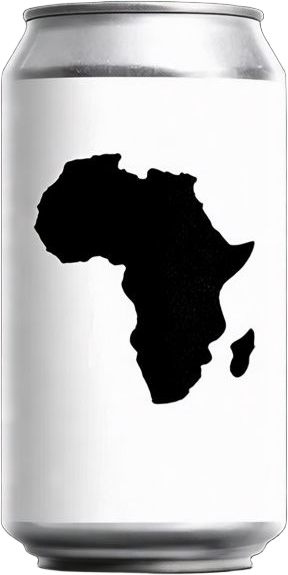The soft drinks market in Africa is as vibrant and diverse as the continent itself. Over the past decade, the market has seen significant growth, largely driven by increasing urbanization, rising disposable incomes, and the growing demand for convenience products. But it’s not just global brands making waves; homegrown soft drinks are also gaining prominence. In contrast, the energy drink sector has not seen the same level of penetration. Let’s dive into the current landscape, examine the key players, and explore why energy drinks have yet to find their footing.
A Mix of Global Giants and Homegrown Heroes
• Coca-Cola and PepsiCo: As expected, the global soft drink behemoths Coca-Cola and PepsiCo dominate the African market. Their long-standing presence, strong distribution networks, and aggressive marketing have helped them establish a firm foothold in both urban and rural areas.
• Coca-Cola, in particular, has developed a significant presence by tailoring its product range to meet the tastes of different African countries. For example, Coca-Cola Nigeria has introduced variants such as Fanta Apple and Sprite Zero to appeal to local preferences.
• PepsiCo has similarly adapted to the market, offering a variety of flavors that resonate with African consumers.
• Local Beverage Companies: Alongside these global giants, many African companies are carving out their own space in the soft drinks market. These companies not only compete on price but also offer flavors and products that appeal to local palates and cultural preferences.
• La Casera (Nigeria): One of the top-selling soft drink brands in West Africa, La Casera offers carbonated apple-flavored drinks that are a hit with young Nigerians. The company has built a strong brand identity with its affordable, ready-to-drink products.
• Softa (Kenya): A homegrown Kenyan brand, Softa produces a variety of soft drinks in flavors such as orange, lemon, and cola. With a focus on affordability and local distribution, Softa has become a staple in both urban and rural markets in East Africa.
• MoFaya (South Africa): Launched by South African entrepreneur DJ Sbu, MoFaya is more than just a soft drink brand; it has become a cultural symbol of entrepreneurship and empowerment in South Africa. While MoFaya offers energy drinks, it is still positioning itself in the larger soft drinks market with a focus on local flavor preferences and a narrative of African ownership.
Why Energy Drinks Haven’t Gained Traction (Yet)
Energy drinks have taken off in other parts of the world, but in Africa, they remain relatively niche. There are a few key reasons why energy drinks haven’t fully penetrated the African market:
• Price Sensitivity: In many parts of Africa, particularly rural areas, consumers are highly price-sensitive. Energy drinks tend to be more expensive than traditional soft drinks, making them less accessible to the average consumer. As a result, many opt for more affordable beverages like sodas, juice blends, or even water.
• Cultural Preferences: African consumers tend to prefer beverages that are familiar and rooted in tradition. Energy drinks are often seen as a more modern, Western concept, which can sometimes clash with local tastes and cultural values. Soft drinks with familiar flavors like fruit juices, ginger beer, or cola tend to resonate more with local consumers.
• Limited Marketing: Unlike in Europe or North America, where energy drink companies pour significant resources into marketing and sponsorships (think Red Bull’s extreme sports campaigns), the African market hasn’t seen the same level of engagement from energy drink companies. Without targeted marketing and local relevance, energy drinks struggle to make a strong impact.
• Health Concerns: Increasing awareness about health and wellness is another factor. While soft drinks are not necessarily considered health products, energy drinks often come with a stigma due to their high caffeine and sugar content. African consumers, particularly in urban areas, are becoming more health-conscious, opting for drinks they perceive as “healthier” or less artificial.
Key Takeaways: The Soft Drinks Future in Africa
• Local Taste Matters: Both global giants and local brands have learned that adapting to African taste preferences is key to success. As local beverages gain ground, the competition will intensify, forcing even the biggest players to innovate.
• Affordability and Accessibility Are Critical: In a price-sensitive market, affordability will continue to be a crucial factor in determining which brands thrive. Brands that can offer value-for-money products and reach rural consumers will have an advantage.
• Energy Drinks Need to Find Their Place: For energy drinks to succeed, they’ll need to overcome both price and cultural barriers. Companies should look to localize their products and marketing strategies to better resonate with African consumers.
• The Rise of Health-Conscious Choices: As African consumers become more aware of health and wellness trends, there is growing potential for drinks that strike a balance between taste, affordability, and health benefits. This opens up opportunities for low-sugar beverages, fortified drinks, and natural fruit juices.
Africa’s soft drinks market is evolving rapidly, with a dynamic mix of homegrown brands and international players competing for attention. While energy drinks have not yet broken through, the potential is there for brands willing to adapt to local preferences and market realities. For companies looking to enter or expand in this space, understanding the intricacies of consumer behavior and local tastes will be essential to long-term success.

Leave a Reply